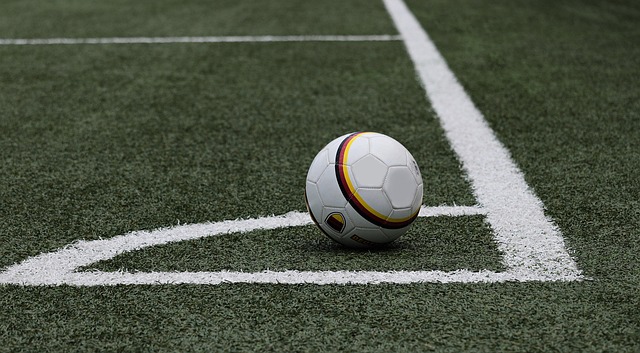Intro: More Than Just Number of Players
At first glance, the line between individual and team sports seems obvious—one pits solo athletes against each other, the other relies on groups working together. But dig a little deeper and it’s more than just who’s on the field. It’s about how decisions are made, how pressure is handled, and how preparation is tailored to the demands of the format. The structure of the sport shapes everything from mindset to training to what success actually looks like.
Strategy plays a massive role in both types. Talent can carry someone part of the way, but it rarely carries them far. In individual sports like tennis or boxing, split-second choices and internal resilience define the outcome. In team sports like basketball or soccer, chemistry, coordination, and timing become tactical weapons. Understanding these nuances isn’t just for players—it’s essential intel for coaches building programs and for fans who want to understand why some teams rise and others fall.
This conversation matters because success in sports isn’t just physical. Whether you’re training solo or leading a squad, knowing how approach and execution change with context is what separates good from great.
Performance Feedback Loops
Performance feedback in sports is about more than stats and tape—it’s how athletes improve, adapt, and survive under pressure. For solo competitors, the feedback loop is tight and immediate. A missed serve, a clipped hurdle, or a slip in form hits instantly. There’s no need to debrief with teammates. Self-awareness is the coach and critic. The ability to correct mid-race or mid-match often means the difference between podium and pack.
In team sports, the loop is messier. Feedback bounces between players, coaches, and systems. Real-time reactions might come through a teammate’s glance, a shouted correction, or a signal from the sidelines. Beyond that, teams rely on layered analytics—possession stats, heat maps, passing networks—to recalibrate over time. Adjustments require buy-in from everyone, not just one athlete calling the shots.
Good communication is non-negotiable. Whether it’s a tactical regroup at halftime or tight coordination in a fast break, the team’s ability to share and act on performance input defines whether lessons are learned—or missed. The best teams don’t just collect data. They translate it into action, together.
Mental Game: Solo Focus vs. Group Dynamics
In individual sports, you’re your own coach, teammate, and motivator. There’s no locker room pep talk, no huddle before the final set. What keeps you going is entirely internal—self-motivation is the fuel. You manage your own mindset, your own tempo, and when things fall apart, you’re the one who has to clean it up mentally.
Team sports spread that weight. Sure, you’ve got to show up focused, but there’s a structure of peer accountability. If you’re off your game, someone calls you out—or lifts you up. Both the pressure and the motivation are shared. A bad play affects more than you; a good one lifts everyone.
Pressure hits differently too. In solo competition, it slams into you full force. Every error, every highlight, it’s all on your name. In a team, pressure dilutes across a roster. It’s easier to recover from mistakes when there’s a next shift, a next unit, or someone covering your back.
Then there’s leadership. For individual athletes, it means mastering discipline—setting goals, hammering routines, pushing through doubt with zero external input. In team settings, leadership looks outward: communicating, organizing, and sometimes sacrificing flash for cohesion.
Bottom line: Solo athletes need bulletproof self-drive. Team players rely on dynamics. Different tools, same goal—mental edge.
Tactical Planning and In-Game Adjustments
In individual sports, there’s no one to lean on mid-match. Athletes adapt in real time, relying on instinct, preparation, and split-second recalibration. A tennis player, missing their first serve rhythm, might switch to more conservative placement. A swimmer senses fatigue midway through a race and subtly shifts stroke technique to conserve energy. There’s no coach stepping in—only internal adjustments, made on the fly.
In team sports, the game doesn’t pause, but the strategy evolves collectively. Coaches call audibles. Captains communicate on-field tweaks. Players recognize patterns and shift accordingly—formation changes in football, full-court presses in basketball, line swaps in hockey. Teams that communicate clearly and trust each other adapt faster and smarter than those that don’t.
Look at Serena Williams adjusting to an opponent’s slice-heavy game mid-set—that’s solo tactical agility. Now compare that to Manchester City repositioning a midfielder to break a defensive lock late in a game—that’s strategic flexibility born from shared awareness. Different approaches, same goal: respond faster than the other side does.
Competitive Learning and Scouting
When it comes to studying the competition, solo athletes and teams take very different routes. Individuals tend to go deep and personal. A sprinter might break down every frame of a rival’s start, their breathing pattern, or how they shift gears mid-race. The focus is narrow—usually one or two opponents max—and the analysis is built around exploiting that edge in a brief but critical window.
Teams, on the other hand, operate on scale. They scout in units: formations, play-calling tendencies, matchup weaknesses. Think basketball teams watching hours of tape to dissect how a squad rotates on defense or how a quarterback reads a zone blitz. It’s not just about one player—it’s about systems.
The tools vary too. Individuals often lean heavy on video breakdowns and personal notes. Teams lean into shared scouting reports, specialty analysts, and sometimes AI-assisted models. Data isn’t just collected; it’s distributed—and interpreted through the lens of the group strategy.
Bottom line: individuals learn to outthink one opponent. Teams learn to outmaneuver an entire setup.
For a deeper breakdown on breaking down opponents, check this out: How to Analyze Opponent Strategies and Plan Accordingly.
Success Metrics and Long-Term Strategy
Winning looks different depending on the format. For solo athletes, performance is the metric. It’s about perfecting form, shaving seconds, lifting more, or hitting cleaner routines. Rankings and personal stats tell the whole story—there’s no one else to share the credit or blame.
In team sports, success is messier. It’s not just about putting up numbers. Chemistry matters. Roster depth matters. A team might lose early-season games while developing cohesion, only to dominate when it counts. Wins and losses are still tracked, sure, but they don’t always reflect growth, adaptability, or long-term readiness.
That’s why judging teams by their record alone is shallow. A team can go .500 and still make a championship run with the right adjustments. A solo athlete, on the other hand, lives and dies by the stopwatch or the scorecard. The stories behind the wins are very different, and so are the roads to get there.
Conclusion: Strategy Is Universal, Execution Is Contextual
There’s no magic formula that works for every sport. What drives victory in a tennis match won’t cut it in a basketball game. Every format—solo or squad—comes with its own rules, rhythms, and blind spots. Strategy shifts depending on how responsibility is spread, how fast decisions must be made, and what kind of pressure you’re facing.
Success, regardless of the format, isn’t accidental. It’s built on planning. In individual sports, athletes plan every rep, every rest day, every move. In team sports, planning expands to systems, rotations, and communication strategy. Whether it’s one against many or many against many, the blueprint matters as much as the raw skill.
So here’s the takeaway: pick your game, learn its pulse, and master your role within it. Don’t copy-paste tactics. Build the kind that fits the shape of your battlefield.




